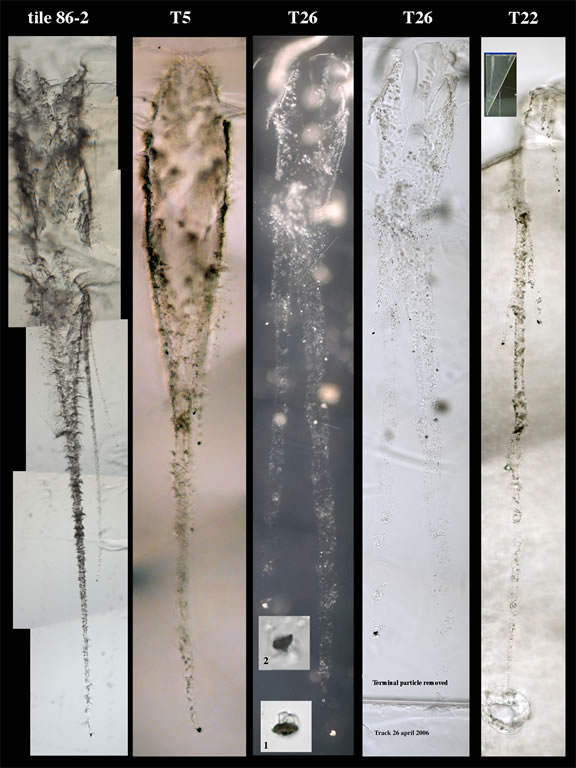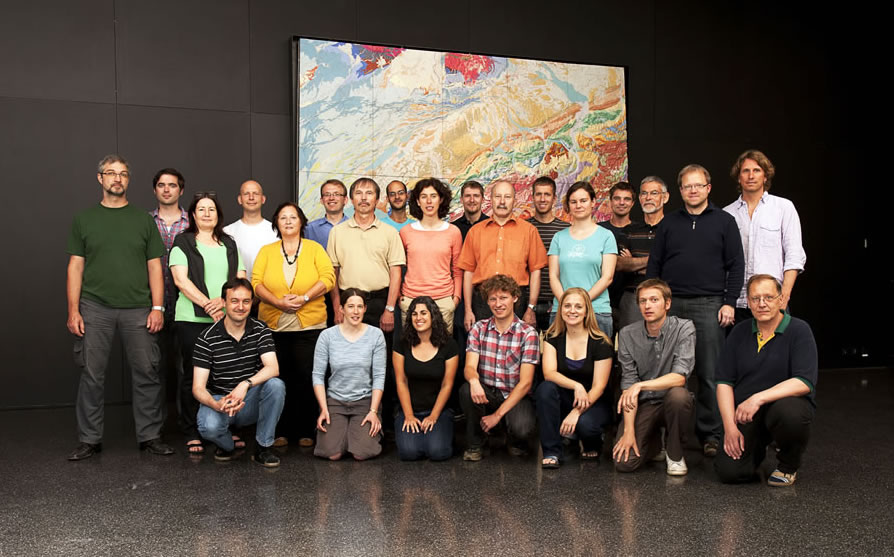Isotope Geochemistry

In 1999, the spacecraft "Stardust" took off to study the comet "Wild 2". In 2004, the spacecraft crossed the dust cloud of the comet and collected dust particles, which the comet had released. These particles were collected in a very porous aerogel and were later brought back to Earth.
To the right you can see the track of such a particle. Since the speed of these grains is higher than a rifle bullet, the gel needs to be light enough that the grain is not altered in its shape or even evaporates upon collision with the gel. Consequently, the density of the gel is only slightly higher then air. The particles are found at the end of the track.

Our group studies isotopes of various elements to investigate weathering processes or the ages of rocks. Furthermore, we analyze moon samples and meteorites to determine their history of origin and their age.
